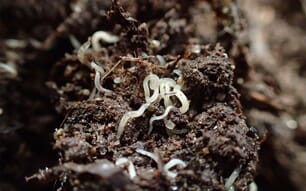In recent years, dwindling supplies of halibut helped push up dock prices to more than $7/lb at major ports, and halibut fillets topped $20/lb at retail. That’s not the case this year.
The fishery opened March 23 and the prices for first deliveries at Kodiak were reported at $5.25 - $5.75/lb with a 20 pound split, then after the first week, prices dropped to $4.50 - $4.75/lb.
Southeast’s first halibut prices were reported at $5.25 to $5.50, also well below last year. Lots of halibut is in the freezers and “everyone is holding fish” said a Southeast processor. “”We’re still not moving a lot of fish even at the lower prices, so it’s a wait and see situation.”
At 10th and M Seafoods in Anchorage, there was “not a lot of enthusiasm” for the season’s first halibut, which was was fetching $10.95/lb for H&G and $17.95 for fillets. “We’re selling lots more cod fish,” said owner Rob Winfrey.
Just over one million pounds of Alaska halibut was landed by 172 deliveries through April 5 with about 21 million pounds left to go.
Lots of buyers are also still holding onto high priced sablefish (black cod), and those prices also took a 40% dive at the start of the season. Starting prices in Southeast ranged from around $5 to $3/lb the first week, compared to $8- $4 a pound last year. Most of Alaska’s sablefish goes to Japan, where the yen value is down 20%. For sablefish, 1.5 million pounds was landed by 87 deliveries out of the 28 million pound quota.
Sitka spawns out- Japan also buys all of Alaska’s herring roe, but they will get less than expected from Sitka. State managers closed the fishery on April 4, leaving more than half of the herring unharvested. In all, the fleet took 5,600 tons of the 11,600 ton quota. This is the second year in a row that spawning has out-paced the commercial harvest at Sitka Sound, dramatically reducing the numbers of unspawned females, whose egg skeins are the money-making product of the sac roe fishery. No word yet on herring price. Kodiak’s roe herring fishery opens April 15 with a 5,410 ton harvest quota. Alaska’s largest roe herring fishery is at Togiak in Bristol Bay in early May. A catch of 30,000 tons is expected to come out of that fishery.
Kings sink in Southeast – The Chinook salmon all gear salmon harvest of 176,000 treaty Chinook salmon, is a decrease of 90,800 fish from 2012. The commercial troll preseason Chinook salmon harvest for 2013 of 129,862 fish, is a decrease of 67,410 kings, down 34%. The numbers are derived from agreements with Canada under the Pacific Salmon Treaty.
Hatch this! : A simple hatch and door monitor with displays in the wheelhouse is now available for fishing fleets. More than half of all fishing fatalities come from vessels going down. For example, the sinkings of the Alaska Ranger and the Katmai five years ago that killed 12 men both stemmed from flooding through open hatches.
That highlighted the need for a system that provides immediate status of all openings aboard fishing boats, said Chelsea Woodward, a commercial fishing safety engineer with
the National Institute of Occupational Safety and Health (NIOSH), a research unit.
The inexpensive monitor takes feedback from the door sensors that separate water tight compartments in the bowels of the vessel.
“These sensors show up on a display in the wheelhouse that has a red light if the door is open, a yellow light if the door or hatch is closed but not secure, and a green light if the door is both closed and secure,” Woodward said.
The monitors were field tested by the fishing vessels Lily Ann and Gladiator during several seasons in the Bering Sea and are now licensed and available to the fleets at Wapato Engineering in Oregon.
Also in the works: a pressure type sensor monitor for slack tanks that is mounted in the engine room near the tank pumps, and a flooding monitor for the lazarette, the aft most compartment in a boat where the through holes for the rudder and propeller shaft are located.
NIOSH will be at ComFish, April 11-13 in Kodiak. www.comfishalaska.com
Land grown reds - The world’s first land based, commercially grown sockeye salmon is headed to market this month from Willowfield Fish Farm in Langley, British Columbia. The farm plans to produce about 11-hundred pounds of reds a week under the West Creek brand. The fish going to market weigh two to three pounds, half the size of wild sockeye salmon.




